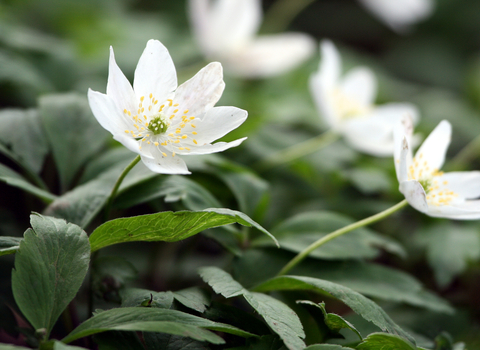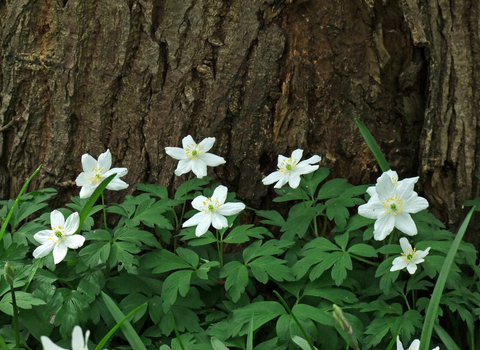
©Jim Higham

Wood anemone ©Paul Lane
wood anemone
A spring delight, the wood anemone grows in dappled shade in ancient woodlands. Traditional management, such as coppicing, can help such flowers by opening up the woodland floor to sunlight.
Scientific name
Anemone nemorosaWhen to see
March to MaySpecies information
About
The Wood anemone is a pretty spring flower of ancient woodlands, and is also planted in graveyards, parks and gardens. Its white flowers bloom between March and May, before the canopy becomes too dense, but its seeds are mostly infertile and it spreads slowly through the growth of its roots.How to identify
An easily recognisable flower, the wood anemone is a low-growing plant, with six to seven large, white or purple-streaked 'petals' (which are actually its sepals), surrounding a cluster of distinctive yellow anthers. Its leaves are deeply lobed and it has a thin, red stem.Distribution
Widespread.Did you know?
The wood anemone is named after the Greek wind god, Anemos, who sent his namesakes, the anemones, in early spring to herald his coming. This legend gives the flower its other common name of 'Windflower'.The Wildlife Trusts manage many woodland nature reserves sympathetically for the benefit of all kinds of wildlife. A mix of coppicing, scrub-cutting, ride maintenance and non-intervention all help woodland wildlife to thrive.
